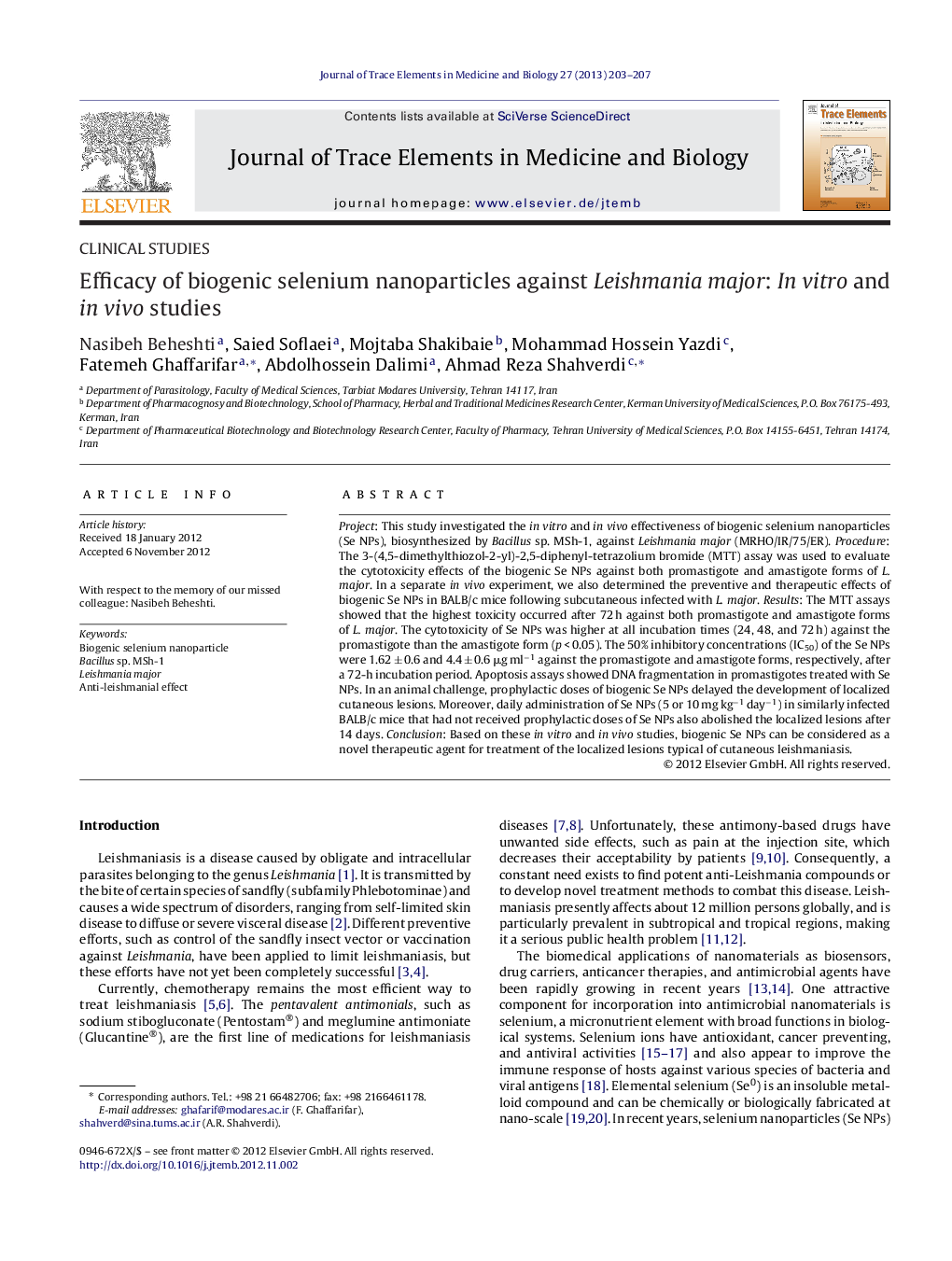| Article ID | Journal | Published Year | Pages | File Type |
|---|---|---|---|---|
| 1226817 | Journal of Trace Elements in Medicine and Biology | 2013 | 5 Pages |
Project: This study investigated the in vitro and in vivo effectiveness of biogenic selenium nanoparticles (Se NPs), biosynthesized by Bacillus sp. MSh-1, against Leishmania major (MRHO/IR/75/ER). Procedure: The 3-(4,5-dimethylthiozol-2-yl)-2,5-diphenyl-tetrazolium bromide (MTT) assay was used to evaluate the cytotoxicity effects of the biogenic Se NPs against both promastigote and amastigote forms of L. major. In a separate in vivo experiment, we also determined the preventive and therapeutic effects of biogenic Se NPs in BALB/c mice following subcutaneous infected with L. major. Results: The MTT assays showed that the highest toxicity occurred after 72 h against both promastigote and amastigote forms of L. major. The cytotoxicity of Se NPs was higher at all incubation times (24, 48, and 72 h) against the promastigote than the amastigote form (p < 0.05). The 50% inhibitory concentrations (IC50) of the Se NPs were 1.62 ± 0.6 and 4.4 ± 0.6 μg ml−1 against the promastigote and amastigote forms, respectively, after a 72-h incubation period. Apoptosis assays showed DNA fragmentation in promastigotes treated with Se NPs. In an animal challenge, prophylactic doses of biogenic Se NPs delayed the development of localized cutaneous lesions. Moreover, daily administration of Se NPs (5 or 10 mg kg−1 day−1) in similarly infected BALB/c mice that had not received prophylactic doses of Se NPs also abolished the localized lesions after 14 days. Conclusion: Based on these in vitro and in vivo studies, biogenic Se NPs can be considered as a novel therapeutic agent for treatment of the localized lesions typical of cutaneous leishmaniasis.
